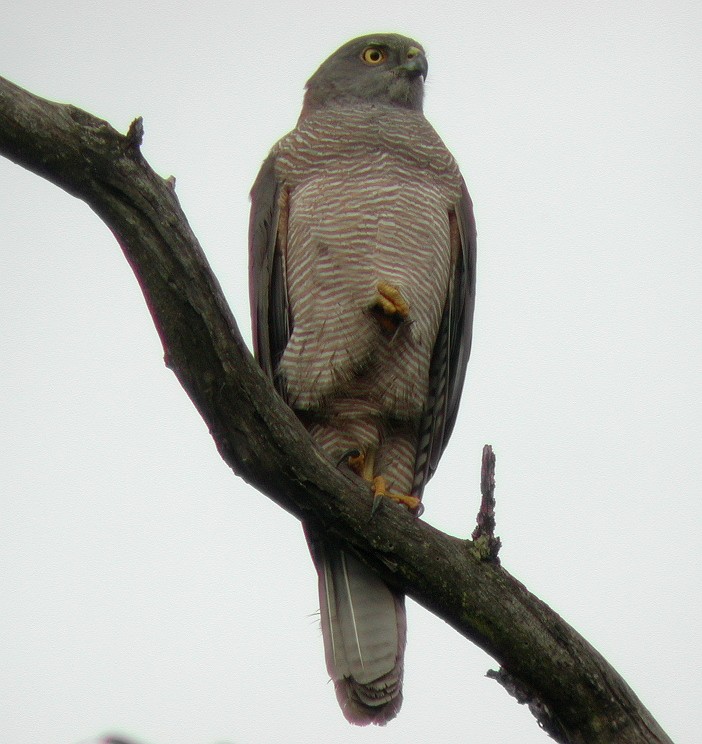Brown Goshawk
A species of Bird Hawks Scientific name : Accipiter fasciatus Genus : Bird Hawks
Brown Goshawk, A species of Bird Hawks
Botanical name: Accipiter fasciatus
Genus: Bird Hawks
Content
Description General Info
 Photo By Aviceda , used under CC-BY-SA-3.0 /Cropped and compressed from original
Photo By Aviceda , used under CC-BY-SA-3.0 /Cropped and compressed from original Description
Its upperparts are grey with a chestnut collar; its underparts are mainly rufous, finely barred with white. Thus it has similar colouring to the collared sparrowhawk but is larger. The flight is fast and flexible. The body length is 40–55 cm (15.7–21.7 in); the wingspan, 75–95 cm (29.5–37.4 in). Females are noticeably larger: adult males weigh 220 g (7.8 oz), and adult females, 355 g (12.5 oz). 
Size
55 cm
Nest Placement
Tree
Feeding Habits
Brown Goshawk primarily preys on medium-sized birds and small mammals like rats and rabbits. This predator utilizes still-hunting from hidden perches and also flushes prey by flying through undergrowth. Occasionally, brown Goshawk consumes bats, reptiles, amphibians, and insects, and has been known to chase prey on foot.
Habitat
Brown Goshawk is found in a range of habitats including eucalypt forests, woodlands, and various types of farmland that have significant tree coverage. This species is also known to inhabit urban areas. Habitat preference extends to regions with rainforest, particularly in the Pacific. Generally, brown Goshawk avoids dense rainforest and treeless landscapes. The bird is adaptable and nests at elevations up to 1500 meters, choosing forest and woodland environments for nesting, sometimes in less dense and more open habitats than those selected by similar species like the Gray Goshawk.
Dite type
Carnivorous
General Info
Feeding Habits
Bird food type
Distribution Area
The brown goshawk is widespread through Australia, Wallacea, New Guinea, New Caledonia, Vanuatu and Fiji. In Australia, it is found mainly in eucalypt forests and woodlands, as well as farmland and urban areas. In the Pacific, it mainly inhabits rainforest. It was also found on Norfolk Island to about 1790, and this may be another undescribed subspecies. However, the lack of specimens from Norfolk Island (1 historical skin and 9 subfossil bones is all the material that has been found) means that no genetic test can be conducted. 
Species Status
Not globally threatened.